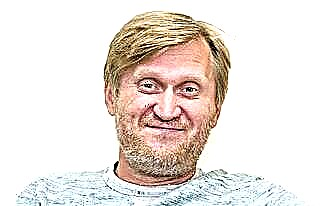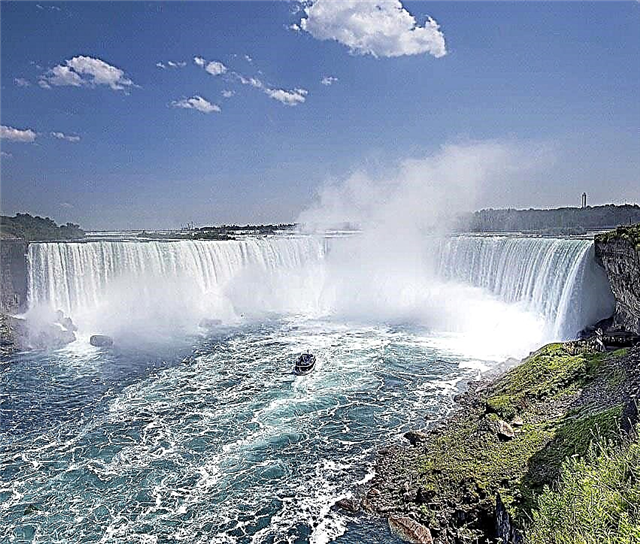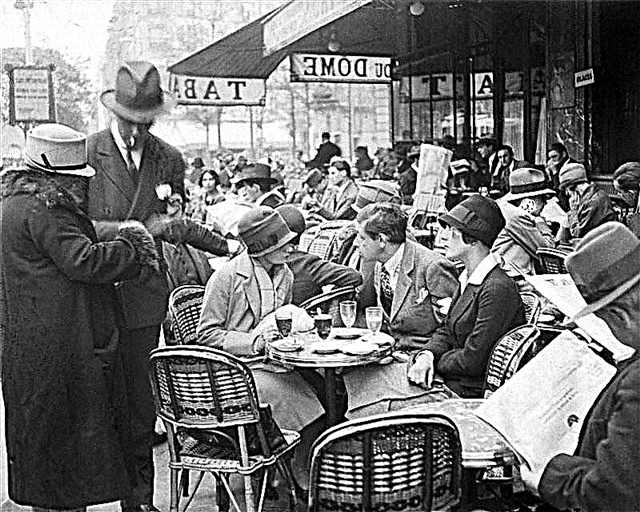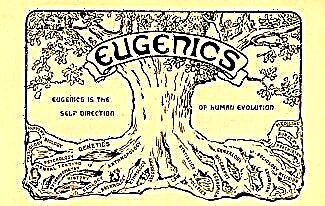The technologies for the production and reproduction of animated films are less than 150 years old, but during this short period by historical standards, they made a giant leap in development. The display of several dim pictures to a dozen of selected people gave way to large halls with a huge screen and excellent acoustics. Cartoon characters often look better than their live counterparts. Sometimes it seems that animation has not yet replaced cinema solely out of pity for the film industry or by virtue of an unspoken agreement - not to throw thousands of colleagues out on the street just because they can be drawn with high quality.

Animation has grown into a powerful industry with billions of dollars in sales. It is no longer surprising that the revenue of full-length cartoons exceeds the revenue of many feature films. And at the same time, for many, watching an animated film is an opportunity for a short time to return to childhood, when the trees were large, the colors were bright, all the world's evil was represented by one fairy-tale character, and the creators of cartoons seemed to be real wizards.

1. If you do not delve into the essence of the issue you can easily consider animated cinema as the younger brother of “big”, “serious” cinema. In fact, all these funny little animals and little people cannot be the progenitors of serious men and women who sometimes live a whole life for one and a half hours on the screen. In fact, the stories about the shocking impact of the Lumière brothers' film about the arrival of the train on the first viewers are greatly exaggerated. Technologies for displaying various kinds of moving pictures, albeit imperfect, have existed since the 1820s. And they didn't just exist, but were used commercially. In particular, entire sets of six discs were published, united by one plot. In view of the then legal immaturity of society, enterprising people bought phenakistiscops (the so-called devices that consisted of an incandescent lamp and a clock spring that rotated a disk with drawings) and, without thinking about copyright problems, organized paid public viewings of new products with mesmerizing names like "Fantasy pantomime" or “Wonderful disc”.

The cinema was still very far away ...
2. Uncertainty about the exact date of the appearance of animated films has led to some inconsistency in setting the date of the professional holiday of animators. Since 2002, it has been celebrated on October 28th. On this day in 1892, Emile Reynaud showed his moving pictures for the first time in public. However, many, including Russian, filmmakers believe that the date of the appearance of animation should be considered August 30, 1877, when Reino patented his cookie box, pasted over with drawings.

Emile Reynaud has been working on his apparatus for almost 30 years
3. The famous Russian choreographer Alexander Shiryaev is considered the founder of puppet cartoons. Indeed, he equipped a mini-copy of the ballet theater in his house and was able to very accurately reproduce several ballet performances. The shooting accuracy was so high (and this happened in the early years of the twentieth century) that later the directors used them to reproduce performances. Shiryaev did not invent his technique out of a good life. The management of the imperial theaters forbade him to shoot ballets live, and the cinematographic technique of those years left much to be desired - Shiryaev used a 17.5 mm film camera "Biocam". Shooting dolls in combination with hand-drawn frames helped him achieve the necessary smoothness of movements.

Alexander Shiryaev managed to achieve the reality of the image with minimal means
4. Almost in parallel with Shiryaev, another subject of the Russian Empire, Vladislav Starevich, developed a similar animation technique. Even in the gymnasium, Starevich was engaged in insects, and he made not only stuffed animals, but also models. After graduating from school, he became the caretaker of the museum, and gave his new place of work two albums of excellent photographs. Their quality was so high that the director of the museum gave the new employee a movie camera, suggesting that they take up the then novelty - cinema. Starevich got fired up with the idea of filming documentaries about insects, but immediately faced an insoluble problem - with the necessary lighting for full-fledged shooting, the insects fell into a daze. Starevich did not give up and began to remove the stuffed animals, skillfully moving them. In 1912, he released the film The Beautiful Lucinda, or the War of the Barbel with the Stag. The film, in which insects were the heroes of knightly novels, made a splash all over the world. The main reason for admiration was the question: how did the author manage to get the living “actors” to work in the frame?

Starevich and his actors
5. The highest-grossing cartoon in the history of the genre is the adaptation of the fairy tale by H. H. Andersen "The Snow Queen". A cartoon called Frozen was released in 2013. Its budget was $ 150 million, and fees exceeded $ 1.276 billion. 6 more cartoons raised over a billion dollars, all of which were released in 2010 and later. However, the box office rating of cartoons is rather arbitrary and rather reflects the rise in prices for tickets to cinemas than the popularity of the cartoon. For example, the 100th place in the rating is occupied by the painting "Bambi", since 1942, has collected more than 267 million dollars. A ticket to the cinema for an evening show on a weekend then cost 20 cents. Now attending a session will cost at least 100 times more in the United States.

6. Despite the fact that dozens of people who made important inventions entered the history of animation, Walt Disney should be considered the main revolutionary in the world of animation. It is possible to list his developments for a very long time, but the most important achievement of the great American animator was the setting of the production of animated films on a virtually industrial basis. It was with Disney that filming cartoons became the work of a large team, ceasing to be crafts of enthusiasts who do everything with their own hands. Thanks to the division of labor, the creative team has time to develop and implement new solutions. And large-scale funding of animation projects made cartoons competitors of feature films.

Walt Disney with his main character
7. Walt Disney's relationship with his employees has never been perfect. They left him, repeatedly almost openly stole developments, etc. Disney himself was also no stranger to rudeness and arrogance. On the one hand, all the employees called him nothing but “Walt”. At the same time, the subordinates put sticks in the wheels of the boss at the first opportunity. One day he ordered to decorate the walls of the office dining room with images of cartoon characters. The team opposed - not everyone will like it when work looks after you in the dining room. Disney still ordered to do it his own way, and received a boycott in response - they talked to him only in case of an extremely official need. The drawings had to be painted over, but Disney took revenge. In the great hall of Disney World in Florida, where there are moving figures of famous figures, he placed President Lincoln's head, separated from the torso, in the middle of the table. Moreover, this head screamed at the employees entering the hall, welcoming them. Fortunately, everything turned out to be a few faints.
8. The Museum of Animation has been operating in Moscow since 2006. Despite the youth of the museum, its staff managed to collect a significant collection of exhibits, telling both about the history of world animation and about modern cartoons. In particular, the Hall of the History of Animation contains the forerunners of modern animation: a magic lantern, a praxinoscope, a zootrope, etc. It also shows Poor Pierrot, one of the first cartoons in the world, shot by the Frenchman Emile Reynaud. The museum staff conduct a variety of entertainment and educational excursions. In their course, children can not only get acquainted with the process of creating cartoons, but also take part in their filming.
9. Russian director and animator Yuri Norshtein has won two unique awards. In 1984, his cartoon "A Tale of Fairy Tales" was recognized as the best animated film of all time by the poll of the American Academy of Motion Picture Arts (this organization awards the famous "Oscar"). In 2003, a similar poll of film critics and directors won Norstein's cartoon "Hedgehog in the Fog". Most likely, there is no precedent for another achievement of the director: from 1981 until now he has been working on an animated film based on Nikolai Gogol's story “The Overcoat”.

10. The wolf in the famous cartoon by Eduard Nazarov “Once upon a time there was a dog” with its habits resembles Humpback - the character of Armen Dzhigarkhanyan from the popular TV movie “The meeting place cannot be changed”. The similarities are not accidental at all. Already in the process of dubbing the director noticed that Dzhigarkhanyan's voice did not suit the rather soft image of the Wolf. Therefore, almost all the scenes with the Wolf were redone so as to give it a kind of gangster flavor. The Ukrainian drinking song that sounds in the cartoon was not specially recorded - it was handed over to the director from the Museum of Ethnography in Kiev, this is an authentic performance of a folk song. In the American version of the cartoon, the Wolf was voiced by country superstar Chris Kristofferson. In Norway, Eurovision winner Alexander Rybak played the role of the Wolf, and his partner in the role of Dog was the vocalist of “A-Ha” Morten Harket. The "Indian" Dog was voiced by the star of "Disco Dancer" Mithun Chakraborty.

11. Music editor of the animated series "Well, wait!" Gennady Krylov showed remarkable musical erudition. In addition to famous songs performed by popular Soviet performers from Vladimir Vysotsky to Muslim Magomayev, the adventures of the Wolf and the Hare are accompanied by compositions by now completely unknown performers. For example, in various series, songs and melodies are performed by Hungarian Tamás Deják, polka Halina Kunitskaya, orchestra of the National People's Army of the GDR, German Guido Masalski, Hazi Osterwald's ensemble or Hungarian radio dance orchestra. Since the 8th episode, Gennady Gladkov was engaged in the music for the cartoon, but the outline remained unchanged: hits were interspersed with practically unknown melodies.

12. The largest Soviet animation studio "Soyuzmultfilm" was created in 1936 under the obvious influence of the successes of large American animation companies. Almost immediately, the studio mastered the workshop drawing process, which made it possible to dramatically speed up production. However, rather quickly, the country's top leadership (and the studio was opened on the personal instructions of I.V. Stalin) realized that the American volumes could not be pulled by the Soviet Union, and they were not needed. Therefore, emphasis was placed on the quality of the produced cartoons. The cadres decided everything here too: already accomplished masters were charged with the obligation to train young people in special courses. Gradually, the personnel reserve began to show itself, and the 1970s - 1980s became the heyday of Soyuzmultfilm. Despite the serious financial backlog, Soviet directors shot films that were not inferior, and sometimes even surpassed world standards. Moreover, this concerned both simple serial products and cartoons that offered innovative solutions.
13. In view of the peculiarities of Soviet film distribution, it is not possible to make a rating of Soviet cartoons by the number of viewers who watched the cartoon. If there are fairly objective data on feature films, then cartoons in cinemas were shown at best in collections or as a plot preceding the film. The main audience of cartoons watched them on television, the ratings of which were of the last interest to the Soviet authorities. Therefore, the only approximately objective assessment of the Soviet cartoon can be the rating of authoritative film portals. What is characteristic: the ratings of the Internet Movie Database and Kinopoisk portals sometimes differ by tenths of a point, but the first ten cartoons are the same. These are “Once upon a time there was a dog”, “Well, wait!”, “Three from Prostokvashino”, “Winnie the Pooh”, “Kid and Carlson”, “The Bremen Town Musicians”, “Gena Crocodile”, “Return of the Prodigal Parrot”, “Snow queen ”and“ The Adventures of Leopold the Cat ”.
14. The modern history of Russian animation already has pages to be proud of. The film “Three Heroes on Distant Shores”, released in 2012, grossed $ 31.5 million, which placed it in the overall 12th place in the Russian rating of the highest-grossing cartoons. The Top 50 also includes: “Ivan Tsarevich and the Gray Wolf” (2011, 20th place, $ 24.8 million), “Three Heroes: a Knight's Move” (2014, $ 30, $ 19.4 million). ), “Ivan Tsarevich and the Gray Wolf 2” (2014, 32, 19.3 million dollars), “Three heroes and the Shamakhan queen” (2010, 33, 19 million dollars), “Three heroes and the princess of Egypt” (2017, 49, 14.4 million dollars) and “Three heroes and the sea king” (2016, 50, 14 million dollars).

15. One of the parts of the Russian animated series “Masha and the Bear” in 2018 became the most popular non-music video posted on the YouTube video hosting. The episode "Masha and Porridge", uploaded to the service on January 31, 2012, was viewed 3.53 billion times at the beginning of April 2019. All in all, the video from the channel "Masha and the Bear" gained more than 5.82 billion views.

16. Since 1932, a special Academy Award has been awarded for Best Animated Short (changed to Animated in 1975). Walt Disney will remain the undisputed leader for many years to come. The cartoons he shot were nominated for an Oscar 39 times and won 12 victories. The closest pursuer Nick Park, who directed the Wallace and Gromit and Shaun the Sheep, has only 3 wins.
17. In 2002, full-length cartoons also received their nomination for an Oscar. The first winner was the already legendary "Shrek". Most often, the “Oscar” for a full animated film went to the products of “Pixar” - 10 nominations and 9 victories.
18. All large national cartoon schools have their own characteristics, however, after the advent of computer technology, animation began to become quite the same type. Globalization has not affected only anime - Japanese national cartoons. It's not about the huge eyes and puppet faces of the characters. Over 100 years of its existence, anime has become an organic layer of a kind of Japanese culture. Initially, the cartoons filmed in the Land of the Rising Sun were aimed at slightly older audiences around the world. Senses, behavioral stereotypes, historical and cultural references, understandable only to the Japanese, were put into the plots. Characteristic features of anime are also popular songs performed at the beginning and at the end of the cartoon, better voice acting, targeting a rather narrow audience compared to Western cartoons, and abundant product placement - the income of anime studios largely consists of sales of related products.

19. Before the advent of computer graphics, the work of animation artists was very painstaking and slow. No joke, in order to shoot a minute of the cartoon, it was necessary to prepare and shoot 1,440 images. Therefore, bloopers in relatively old cartoons are not at all uncommon. However, the number of frames at the same time prevents viewers from noticing inaccuracy or absurdity - the image changes faster than in a movie.Cartoon bloopers are noticed only by the most meticulous viewers. For example, in the cartoons "Well, wait!" and “Holidays in Prostokvashino” constantly something happens to the doors. They change their appearance, location and even the side to which they open. In the 6th episode "Well, wait a minute!" The wolf chases the Hare along the train, and knocks down the carriage door and flies itself in the opposite direction. The cartoon "Winnie the Pooh" generally depicts the paranormal world. In it, trees grow branches on purpose in order to properly knock off a bear flying down (when lifting, the trunk was without branches), pigs can teleport in case of danger, and donkeys grieve so much that they destroy all the vegetation near the pond without touching it.

The bust of Uncle Fedor's mom is the most frequently noticed blooper in cartoons
20. In 1988, the American Fox Broadcasting Network began airing the animated series The Simpsons. A situational comedy about the life of a provincial American family and its neighbors has been released for 30 seasons. During this time, viewers saw more than 600 episodes. The series has won 27 Annie and Emmy Awards each for Best Television Film and dozens of other awards around the world. The show has its own star on the Hollywood Walk of Fame. In The Simpsons, they joke about almost anything and parody whatever they want. This has repeatedly caused criticism of the creators, but the matter has not yet reached bans or more serious measures. The series has been included in the Guinness Book of Records three times: as the longest running TV series, as the series with the most main characters (151), and as the series with the most guest stars.

Record holders









